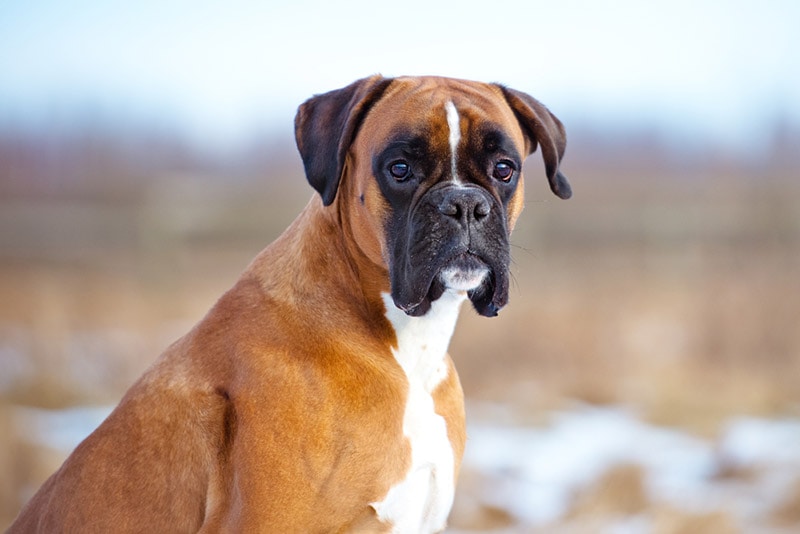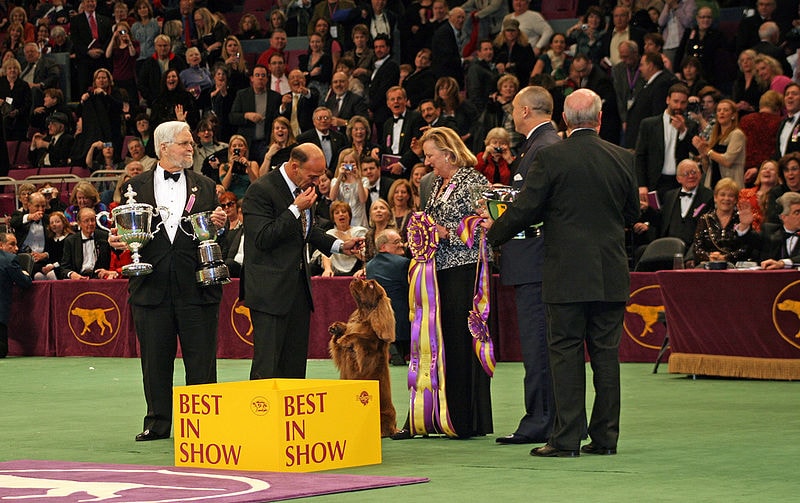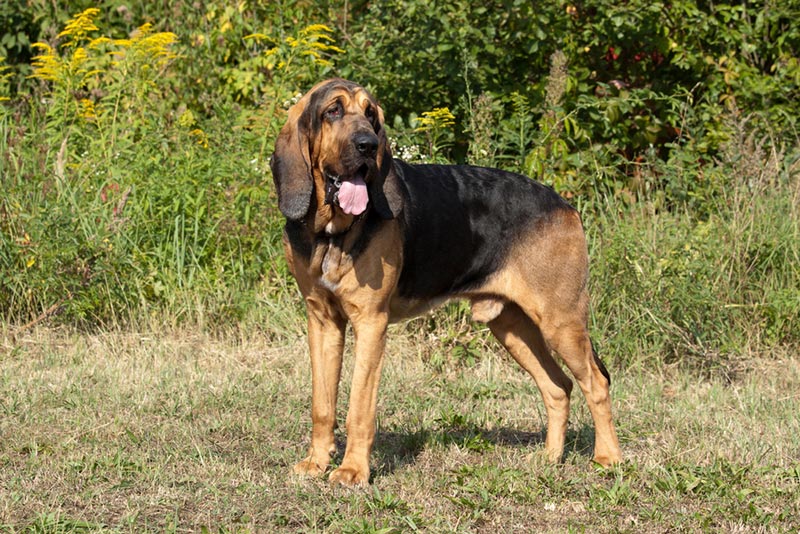How to Potty Train a Great Dane: 10 Easy Tips That Work
By Jessica Kim
Updated on
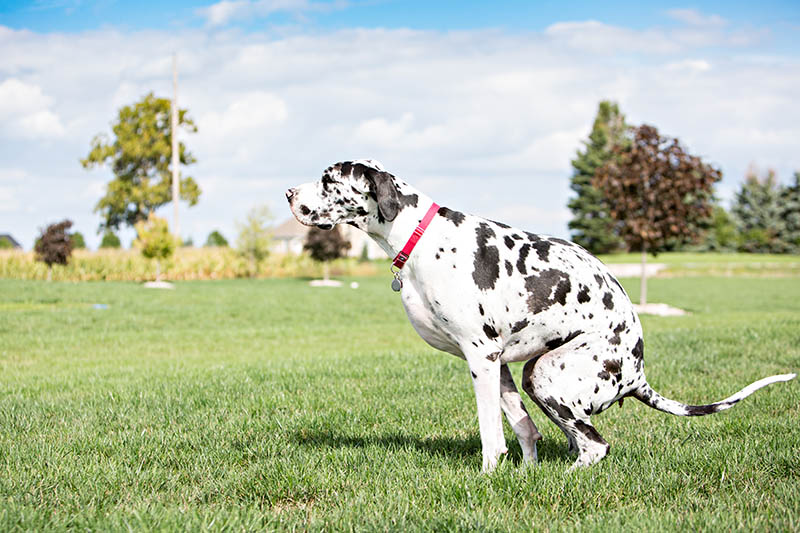
Great Danes are wonderful dogs known for their gentle and calm demeanor. These dogs have a few special care needs due to their large size. However, when it comes to potty training, most owners don’t face any particular challenges.
Even though potty training a Great Dane can be easier than potty training small dog breeds, it can still be a challenging experience, especially for first-time dog owners. So, it doesn’t hurt to have some tips and tricks to help make the process a little easier and set your Great Dane up for success.
How to Potty Train a Great Dane
1. Avoid Potty Pads
While potty pads can be good solutions for smaller dog breeds, they can slow down potty training for Great Danes. While peeing and pooping indoors may be manageable for puppies, the last thing you want is for an adult Great Dane to relieve itself inside. A pee pad may not be absorbent enough and the odor will be extremely strong.
If you don’t plan to use potty pads throughout a dog’s lifetime, it’s best to avoid using them altogether because they can just end up confusing dogs. A Great Dane puppy may also start to learn that it can relieve itself on any sort of mat or rug, and it’ll be an extra habit that they’ll have to unlearn.
2. Consider Crate Training

Crate training can help speed up the potty-training process. When puppies are in a smaller area, they’re less likely to relieve themselves because they don’t want to dirty up their living spaces. Crate training can also help keep your puppy in a safe space when you can’t keep an eye on it.
It’s important to note that crates shouldn’t ever be used as a space to confine your puppy, and puppies shouldn’t be left alone inside them for long hours. Crates are meant to be safe spaces for dogs to retreat to, and dogs should always have a positive association with them.
3. Establish a Consistent Routine
Consistency can help Great Danes by teaching them to anticipate opportunities where they can relieve themselves outside. When they’re able to go outside consistently, they’ll eventually develop a habit and be more likely to wait to relieve themselves rather than go in the house.
When you’re first starting out, make sure to consistently take your Great Dane outside the moment it wakes up in the morning, half an hour after meals, and right before bedtime.
4. Give Access to Parts of the House Incrementally
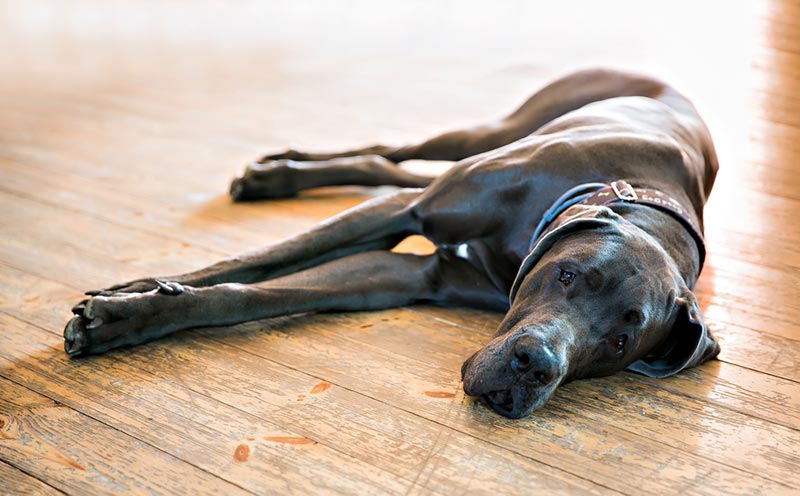
Dogs have different concepts of homes and need to learn that a whole house is its home. Many times, dogs relieve themselves inside the house because they don’t understand that the entire structure is their living space. So, it’s often helpful to restrict their access to the entire home when they first arrive.
Your Great Dane can spend as much time with you in any part of the house when you’re able to provide undivided attention. However, it’s best to keep it in a crate or a smaller room whenever you can’t keep your eye on it. When your Great Dane can successfully wait to relieve itself in these smaller spaces, you can expand its boundaries a little more until it can have full access to the house without causing any accidents.
5. Use a Potty-Training Bell
Potty training bells can help dogs learn to signal that they want to go outside to relieve themselves. When you add bell training to potty training, you can simultaneously teach your dog to let you know whenever it needs to pee or poo.
When using a potty-training bell, just make sure that you’re not unintentionally training your Great Dane to use the bell whenever it wants to go outside. Whenever your dog hits the bell, keep the time outside brief and go back inside immediately after your dog relieves itself. You can give your dog a few minutes to go potty, but if it tries to go on walks or do anything else outside, bring it back indoors.
6. Take Your Great Dane Out to the Same Spots
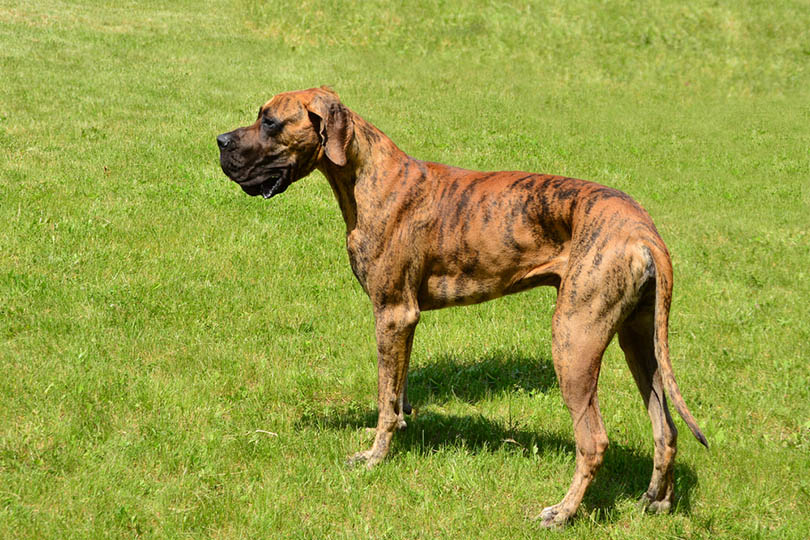
Having a designated potty spot can help Great Danes understand to relieve themselves outside more quickly. Your Great Dane will smell the odors and will often pee or poo in similar locations. Leading your Great Dane to the designated potty spot can also help them understand the purpose of going outside, and it will encourage them to relieve themselves more quickly.
7. Thoroughly Clean Up Accidents
Since dogs are likely to pee and poop in the same areas, it’s important to do a thorough job of cleaning up any accidents in the house. Simply wiping up the mess with a mild cleanser won’t get rid of faint traces of odors that your dog can smell.
You’ll want to use an enzymatic pet urine cleaner and spray it thoroughly on spots where your dog has relieved itself. These types of cleaners will break up and eliminate odors that encourage dogs to pee in the same spot.
8. Start with Taking Puppies Out Every Hour
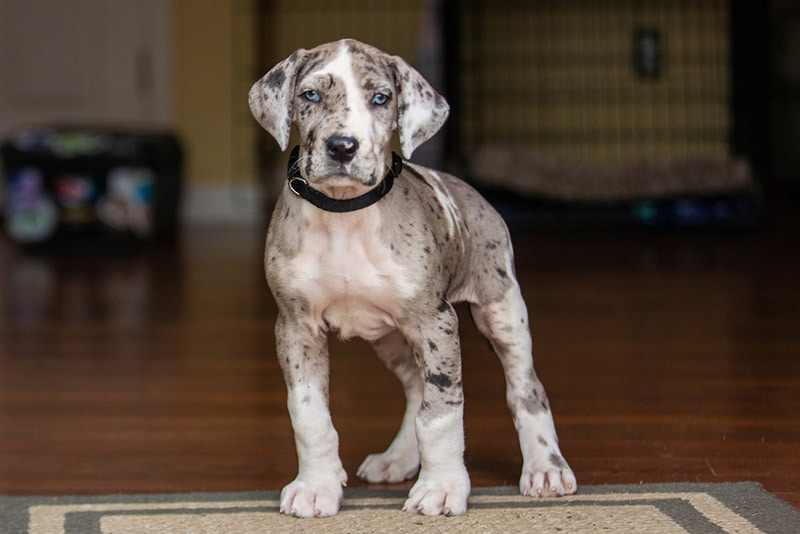
As a general rule of thumb, Great Dane puppies new to potty training should be taken out at least every hour. Just keep in mind that every puppy is different, and the ability to hold the bladder will vary from puppy to puppy.
As your puppy grows older, you can increase the amount of time it waits before being let out. Great Dane puppies can usually wait the same number of hours to how many months old they are. For example, if your puppy is 3 months old, it can wait about 3 hours before needing a potty break. Just keep in mind that dogs shouldn’t hold their bladder for more than 8 consecutive hours.
9. Establish a Potty Cue
While you can’t exactly make your dog relieve itself on command, you can teach a cue to help it understand when it’s appropriate to relieve itself. Simply saying a phrase like, “Go potty,” every moment before your Great Dane pees or poops can help it understand what you want it to do when it goes outside.
Once your dog gets used to the cue, you can start using it in the home. If you sense that your dog needs to relieve itself, you can say the cue and see how your dog responds. If it responds with eagerness, it most likely has to go potty outside.
10. Give Praise & Rewards
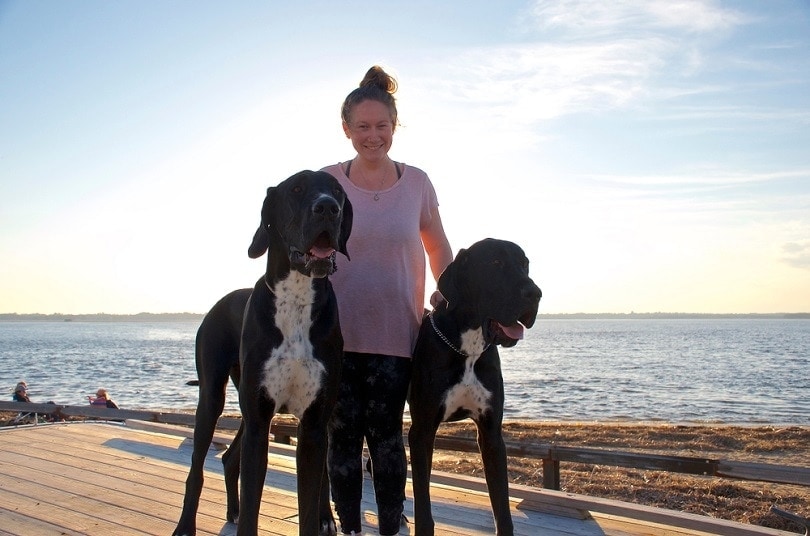
Great Danes tend to be eager to please and respond very well to positive reinforcement. So, don’t forget to give praise every time it successfully goes potty outside. If your Great Dane is particularly food motivated, you can feed it a treat.
Just make sure to give treats immediately after your dog relieves itself. If you wait to give your dog a treat until you come back inside, it won’t make the connection that the treat is for going potty. It will most likely think that it’ll get a treat every time it comes back inside the house.
In Conclusion
Potty training a Great Dane is relatively easy compared to potty training small dogs. However, it’s still a challenging experience for most dog owners. Routines, rewards, and establishing communication cues can help immensely with potty training.
If you’re having a particularly challenging time with potty training, check with your veterinarian to see if your Great Dane has any issues in its digestive or urinary tract. If there aren’t any medical issues affecting your dog’s ability to hold its bladder, you may want to work with a reputable dog trainer to help your dog succeed in potty training.
Featured Image Credit: Victoria Rak, Shutterstock


